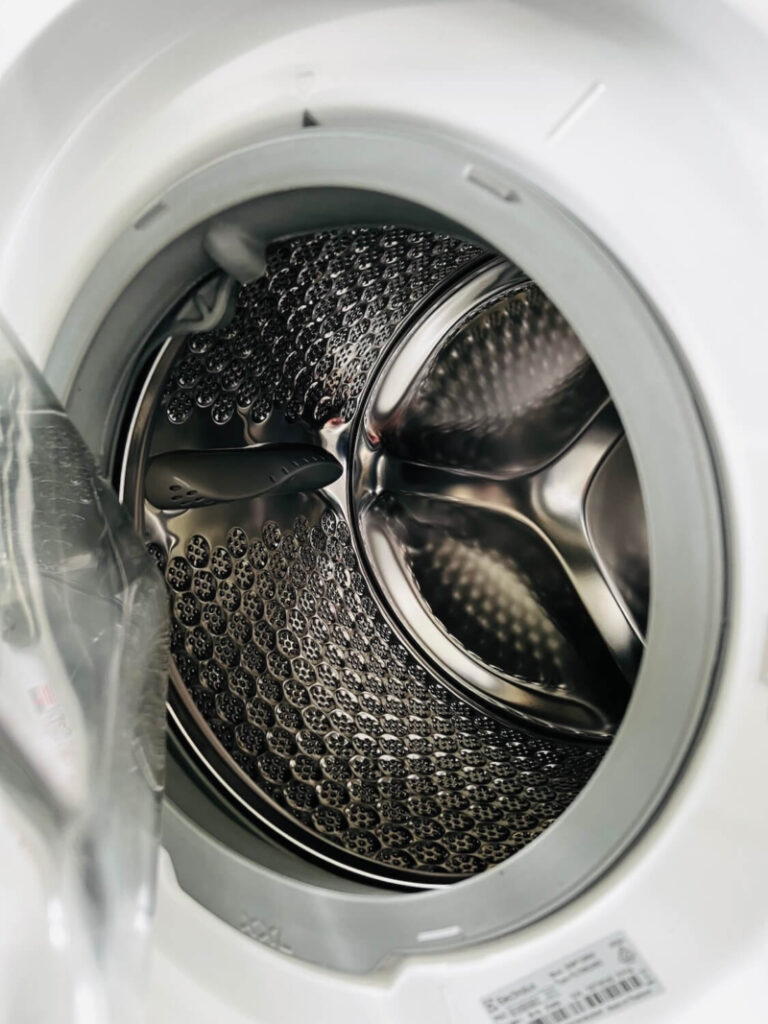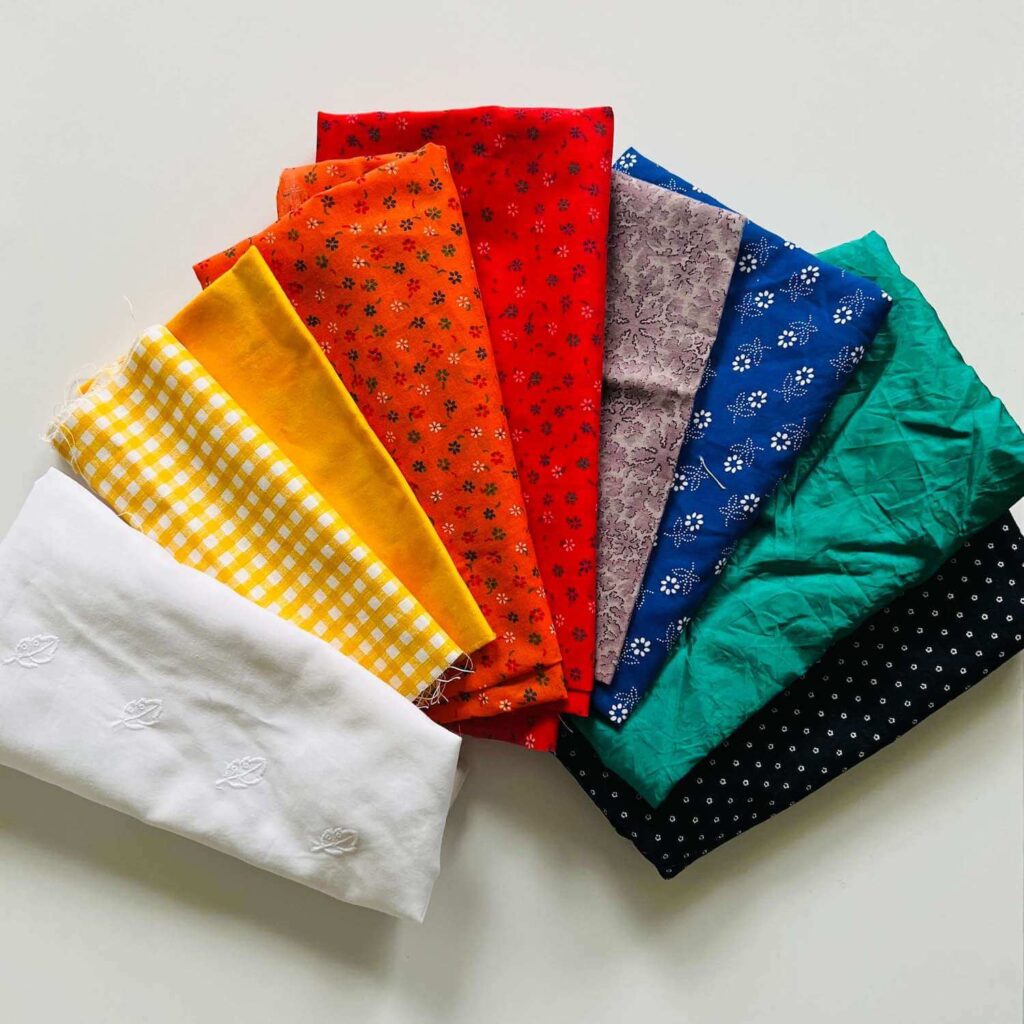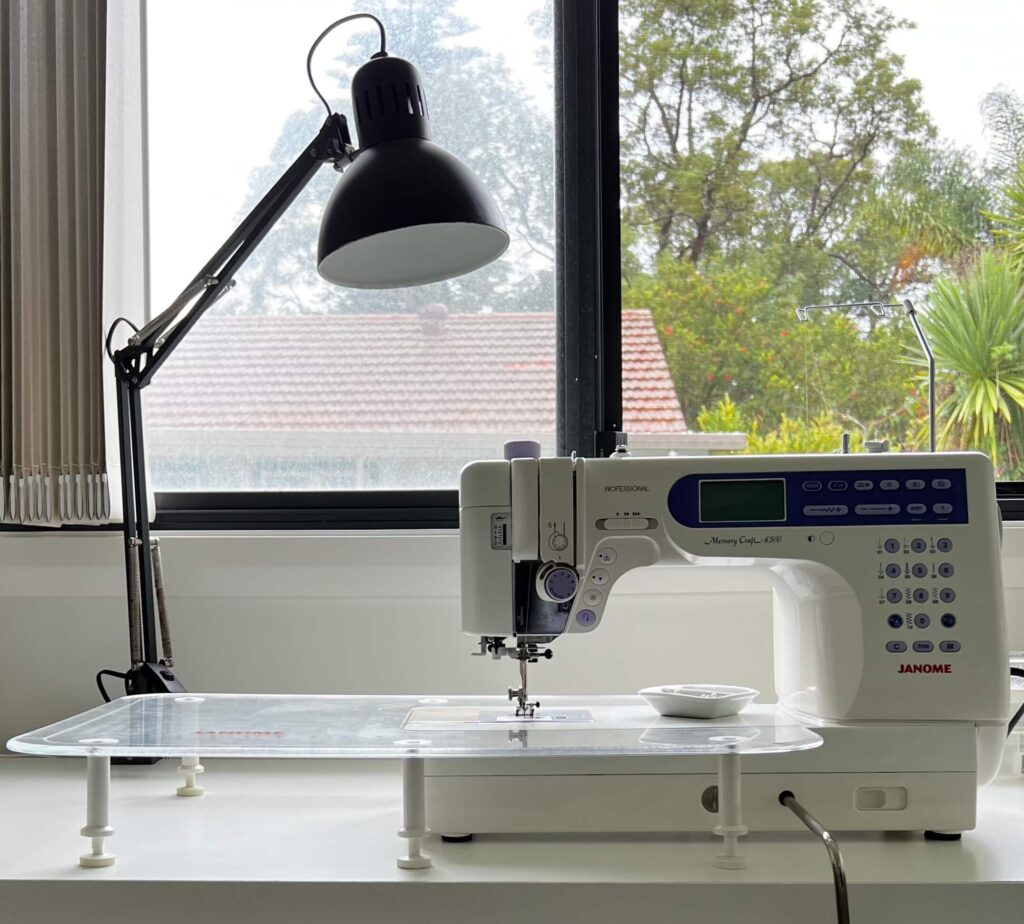Prewashing is one of the sewing preparations steps before we get to the sewing itself. To prewash means that you wash your fabric, dry and iron first, before you cut out a pattern pieces and sew it all together. Wash and dry your fabric as you would wash and dry a garment from it.
Why is prewashing beneficial?
- Cleans the fabric
- Prevents colour bleeding on your project
- Removes chemicals
- Shrinks fabric
- Trues grain
- Removes smells
You don’t want to put so many hours in the sewing and then realise that colour bleed or fabric shrunk and now It’s not wearable.
Treating a raw edges
Before you wash your fabric, treat raw edges on the woven fabrics. You can use pinking shears, zigzag stitch or overlocker to prevent raw edges from fraying. You do not need to overlock selvages.
Sorting



Wash colours with alike colours – whites with whites, darks with darks. Wash with other like fabric or garments.
Fluffy fabrics like fleece, minky or corduroy tend to shed fluff and fibres in a first wash, even after treating the edges. Keep it separately or with other fluffy fabrics.
Colour running
When fabric gets wet sometimes dye leaches out into a water and to other fabrics. Check for colour bleeding by soaking a bit of the fabric in warm water and then tap it into a kitchen towel. Look for a colour transfer. If the fabric bleeds, hand wash and rise until the water is clear.
Hand wash or washing machine
If I buy fabric second hand, I will hand soak it in the warm water with a soda bicarbonate for at least 30 minutes. If the colour doesn’t bleed, I would put it a washing machine on the cycle and wash it as a final garment. For instance wool on a wool settings, lightweight fabric on a delicate cycle and so on.
Drying
Tumble dry or air dry your fabric in the way you would dry a finish garment. Try to avoid harsh bends and creases and distribute the length so grain line doesn’t get damaged:
- hang fabric lengthwise
- hang on multiple clotheslines
- use a trouser/skirt hangers with clips for long fabrics pieces, clip along the selvage lines – that’s the strongest part of the fabric
Ironing and Pressing
Iron and press the fabric before cutting and sewing. Getting rid of wrinkles helps with an accuracy othe the cutting. I like to do this step right before using the fabric, so until then I would fold the washed fabric and stored.
Enjoy more reading on our blog.
I heard about some exceptions, such as quilting pre-cut fabric or a polyester. What do you think?
Do you prewash your fabric?




Hi Ivana thanks for this article
When I started sewing I did not realise about the importance of pre-washing fabric, then when I started doing it I used to mix all of my new fabrics or sometimes even with my regular until I had a very bad experience with fabric bleeding I had to wash all my clothes again and leave the fabric bleeding in my bathtub for around a week.
I would have saved a lot of time and energy by reading your article before
Thanks for your content
Hello Astrid,
Thank you for your comment!
I am sorry for your bad experience, something similar happened to me too.
But from the another perspective, we learn from every experience, good or bad.
Good luck and happy sewing!